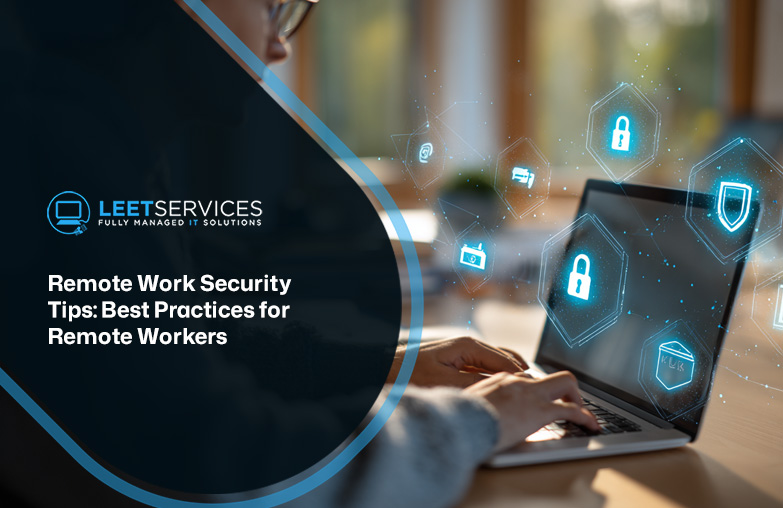Network Security Basics: Tools, Threats & Best Practices
Understanding network security basics is essential for any business that relies on digital systems. Whether you're managing internal systems or working with cloud-based platforms, knowing how to protect your computer network can save you from costly downtime and data breaches. In this article, you'll learn the basics of network security, explore different types of threats, and discover practical ways to secure your systems.
We'll cover everything from firewalls and encryption to access control and intrusion prevention. You'll also learn about common mistakes businesses make and how to avoid them. If you're looking to build a secure network or improve your current setup, this guide will give you a strong foundation.
What are network security basics?
Network security basics refer to the fundamental practices and tools used to protect your systems, data, and users from unauthorized access and cyber threats. These basics form the first layer of defense in your overall cybersecurity strategy.
At its core, network security includes managing who can access your systems, protecting data as it moves across network connections, and monitoring for signs of intrusion or malicious activity. It also involves setting up firewalls, using encryption, and applying security policies that define acceptable use. For example, a virtual private network (VPN) can help secure remote access, while cloud security tools protect data stored online.
Security measures like authentication, access control, and network segmentation help reduce vulnerabilities and limit the impact of potential attacks. By understanding and applying these basics, you can build a more secure network and reduce your exposure to threats like ransomware, malware, and social engineering.

Common mistakes to avoid when securing your network
Even with the right intentions, many businesses make avoidable errors that leave their networks exposed. Here are some of the most common mistakes and why they matter.
Mistake #1: Ignoring regular updates
Failing to update software and hardware leaves known vulnerabilities open to attackers. Updates often include security patches that fix these issues. Skipping them gives cybercriminals easy access.
Mistake #2: Weak password policies
Using simple or reused passwords makes it easy for attackers to guess or crack login credentials. Strong password policies and multi-factor authentication reduce this risk.
Mistake #3: No firewall configuration
A firewall is only effective if it's properly configured. Default settings may not block all threats. Customizing rules ensures better protection against unauthorized access.
Mistake #4: Overlooking employee training
Employees are often the weakest link. Without training, they may fall for phishing scams or mishandle sensitive data. Regular training helps them recognize and avoid threats.
Mistake #5: Poor network segmentation
Not separating parts of your network can allow threats to spread quickly. Segmenting your network limits access and contains potential breaches.
Mistake #6: Lack of intrusion detection
Without monitoring tools, you may not notice an attack until it's too late. Intrusion detection systems alert you to suspicious activity in real time.
Mistake #7: No backup or recovery plan
If ransomware hits and you have no backup, your data could be lost. A solid backup and recovery plan ensures you can restore operations quickly.
Key benefits of understanding network security basics
Knowing the basics of network security offers several advantages:
- Helps prevent data breaches by identifying and closing security gaps
- Reduces downtime by stopping threats before they disrupt operations
- Builds trust with clients and partners through secure systems
- Supports compliance with data protection regulations
- Makes it easier to scale your IT systems securely
- Lowers long-term costs by avoiding expensive cyber incidents

Why encryption and secure data in transit matter
Data in transit refers to information moving between devices or across networks. If this data isn’t encrypted, it can be intercepted by attackers. Encryption turns readable data into a coded format that only authorized users can access.
Using encrypted connections, like HTTPS or a VPN, helps protect sensitive data such as login credentials, financial information, or client records. This is especially important when working remotely or using cloud services. A secure network ensures that even if someone intercepts the data, they can’t use it.
Types of network security controls you should implement
There are several layers of network security controls that work together to protect your systems. Here’s a breakdown of the most important ones.
Control #1: Administrative controls
These include policies and procedures that guide how your organization handles security. Examples are user access rules, password policies, and employee training programs.
Control #2: Technical controls
These are tools and systems like firewalls, antivirus software, and intrusion prevention systems (IPS). They help detect and block threats automatically.
Control #3: Physical controls
Physical measures like locked server rooms, surveillance cameras, and restricted access to hardware help protect your IT infrastructure from tampering or theft.
Control #4: Preventive controls
These are designed to stop attacks before they happen. They include things like network segmentation, access control lists, and secure configurations.
Control #5: Detective controls
These tools identify and alert you to suspicious activity. Examples include intrusion detection systems (IDS) and log monitoring tools.
Control #6: Corrective controls
These help you recover from an incident. Backups, disaster recovery plans, and system patches fall into this category.
Control #7: Compensating controls
When standard controls aren’t possible, compensating controls provide alternative protection. For example, using a VPN when physical access controls aren’t feasible.

How to build a secure network architecture
Setting up a secure network architecture involves more than just installing antivirus software. It starts with understanding how your systems communicate and where vulnerabilities may exist.
Start by mapping out your network layer by layer. Identify all devices, users, and connections. Then, apply access control to limit who can reach what. Use firewalls to filter traffic and segment your network to isolate sensitive systems. Authentication methods like multi-factor login add another layer of protection.
Regularly review your setup and update it as your business grows. Security tools should be tested and monitored to ensure they’re working as intended. By taking a layered approach, you reduce the risk of a single point of failure.
Best practices for network security
Following best practices helps you stay ahead of threats and maintain a strong defense.
- Use strong, unique passwords and enable multi-factor authentication
- Keep all software and systems updated with the latest patches
- Train employees regularly on cybersecurity awareness
- Segment your network to limit access and contain breaches
- Monitor network traffic for unusual activity
- Back up data regularly and test your recovery process
Following these steps helps protect your systems and gives you peace of mind.

How Leet Services can help with network security basics
Are you a business with 15–80 employees looking to improve your network security? If you're growing and relying more on digital systems, now is the time to get your security in order. Many small to mid-sized businesses wait until after a breach to act—but by then, the damage is done.
At Leet Services, we help businesses like yours understand and apply the basics of network security. From setting up firewalls to managing access and monitoring for threats, our team builds reliable systems that scale with your needs. Contact us today to get started.
Frequently asked questions
What’s the first step in setting up network security for my company?
Start by assessing your current setup. Identify all devices, users, and software connected to your network. This helps you understand where vulnerabilities may exist. Then, create security policies that define who can access what and under what conditions.
Implement basic security measures like a firewall, antivirus software, and a virtual private network (VPN) for remote access. These tools create a foundation for protecting your private network and sensitive data.
How do I know if my firewall is working properly?
You should regularly test your firewall settings to ensure they’re blocking unwanted traffic. Use network monitoring tools to check for suspicious activity or unauthorized access attempts. If you notice unusual spikes in traffic or failed login attempts, your firewall may need adjustments.
Also, make sure your firewall is updated and configured to match your security policies. A misconfigured firewall can leave your systems exposed to intrusion or malware.
What’s the difference between cybersecurity and network security?
Cybersecurity is a broad term that covers all aspects of protecting digital systems, including hardware, software, and data. Network security is a subset that focuses specifically on protecting the integrity and usability of your network.
While cybersecurity includes things like cloud security and data encryption, network security deals more with access control, intrusion prevention, and managing network connections. Both are essential, but network security is often the first line of defense.
Why is encryption important for small businesses?
Encryption protects your data by converting it into unreadable code that only authorized users can access. This is especially important when sending data over the internet or storing it in the cloud.
For small businesses, encryption helps prevent data theft during cyber attacks or social engineering attempts. It also supports compliance with regulations that require protection of sensitive data like customer information or financial records.
How can I protect against ransomware and other malware?
Use antivirus software and keep it updated. Train your employees to avoid suspicious links or downloads. Back up your data regularly so you can recover if an attack happens.
Also, segment your network to limit the spread of malware and use intrusion prevention systems to detect threats early. These steps reduce the chance of a successful ransomware attack.
What role does access control play in network security?
Access control limits who can view or use resources on your network. It helps prevent unauthorized users from reaching sensitive systems or data. This is especially important for businesses handling customer information or financial records.
Use authentication methods like passwords, biometrics, or security tokens to verify users. Combine this with role-based access to ensure people only see what they need to do their jobs. This reduces the risk of internal threats and accidental data exposure.





.avif)
.avif)
.avif)


